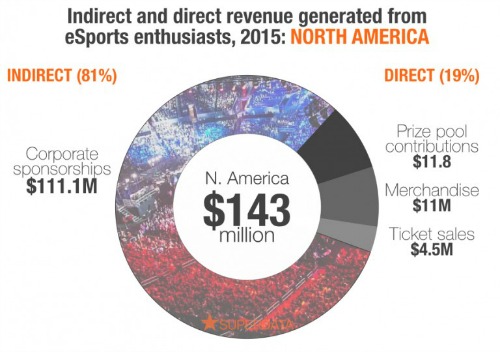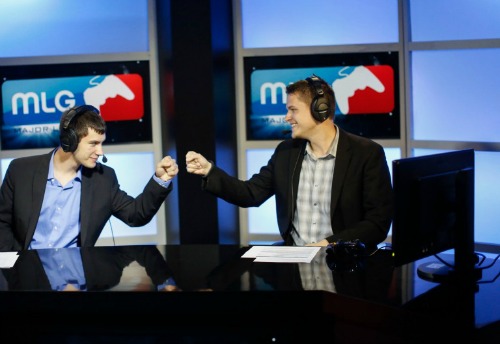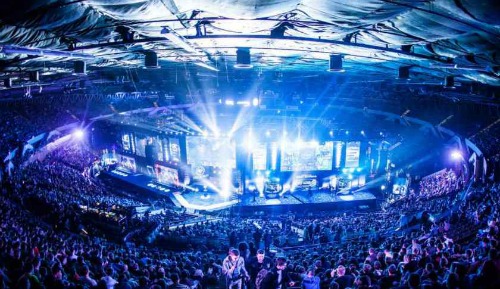Taylor 20 Apr 2016 // 8:23PM GMT
.jpg)
As more and more key players across the sports landscape set their sights on a piece of the eSports pie, it’s important to highlight the role that interactive live chat has played in the explosive growth of professional gaming.
eSports has seen a meteoric rise in the past few years, with iconic brands like Intel, Coca-Cola and Doritos already jumping in. By 2015, the worldwide eSports market had reached 134 million viewers. In North America alone, eSports revenue had eclipsed $143 million. The market is even larger overseas, with Korea and China revenue numbers hitting well above $600 million. At first glance, eSports appears to resemble traditional sports in certain respects – corporate sponsorships, ticket sales and merchandising are all core aspects of its revenue stream. Because its rise has taken place during the explosive growth of social media, however, there is one key difference that sets eSports apart: connectivity.

eSports really took off with Major League Gaming (MLG) broadcasting its first professional video game tournament in 2006, debuting with Bungie’s Halo 2. Soon after, fighting games such as Bandai Namco’s Tekken 6 and other first-person shooters, such as Call of Duty, began gaining traction. By 2015, Activision Blizzard struck a deal to acquire MLG for $46 million. Activision CEO, Robert Kotick, noted that the main driver of the acquisition was MLG’s streaming capabilities – a prelude to the steady rise of eSports and its ace-in-the-hole, the interactive live chat.
The gaming-centric streaming website Twitch.tv, acquired by Amazon in late 2014, has played a pivotal role in eSports growth. Although ticket sales account for a small percentage of revenue, the live-streaming of major eSports events brings in well over 100 million viewers per month. Outside of the blockbuster events, Twitch.tv’s two million streamers deliver billions of hours of content to viewers on a daily basis. The sheer amount of content, however, isn’t what keeps viewers from returning time and time again – it is the live chat with fellow fans and connectivity with the broadcaster that provides a sports experience unique to eSports.
Imagine, after a momentum-capturing touchdown or a game-swinging grand slam, praising your favorite player in real-time and actually getting a direct, personalized response back from the athlete. These are the types of one-of-a-kind interactions Twitch.tv viewers experience whenever they tune into their favorite streamer. Outside of the direct interactions, each individual live-chat has become a microcosm of each individual streamer’s fanbase. Personalized emotes, memes and hivemind-like activities (such as Twitch.tv’s iconic “Kappa” emoticon transforming into KappaRoss for the Bob Ross marathon and being posted in the live-chat nearly 4 million times) come together to create a unique, social gathering that becomes more than watching someone play a video game – it creates a destination for like-minded individuals to connect. When a major event occurs, each individual streamer’s fanbase flows into a single live chat – the personalized emotes and memes blend together into a non-stop social flood of fandom. Different followings meld together to create an interactive audience that is as interested in watching together as it is in the event at hand.

This dynamic has caused the market to explode. Like other sports, eSports now has professional teams, such as Evil Geniuses, Fnatic and Titan, which have attracted corporate sponsorships. While these sponsors include players in the gaming space, such as Intel, Razor and Corsair, the likes of the aforementioned Coca-Cola and Doritos are also sponsoring teams. It’s easy to see why, as the top 18 tournaments all have prize pools over $1MM, with the top two above $10MM. Recently, Intel celebrated its tenth year in eSports with its biggest event ever. The Intel Extreme Masters (IEM) World Championship in Poland attracted over 113,000 fans to the Spodek Arena over the course of the event, but also garnered 34 million unique viewers to the live broadcasts, a 32% rise compared to last year’s events.

While there is a real attraction to attending these events for the die-hard fans, many events occur around the world, from Intel’s event in Poland to the recent Shanghai Major in China. This is the benefit of the accessibility of streaming platforms like Twitch.tv and the new YouTube Gaming – one of the many reasons live-streaming is in a period of continuous growth. If sponsors are able to harness the power of the live chat, tremendous opportunity lies in how eSports could influence the world of traditional sports.
It won’t be a surprise if major traditional leagues take their live-streaming platforms further as eSports continues to crush expectations – the NFL has already seen the power of streaming and solidified a partnership with Twitter to live-stream Thursday Night Football games for the 2016-17 season, which is as close to a live chat a platform can get outside of actually streaming games on Twitch.tv. eSports is on the leading edge of this connectivity curve, and will continue to influence other sports as it builds upon its game-changing formula.


































.jpg)


84507c4a918367d3ac1bff0000c9ebb1.png)









